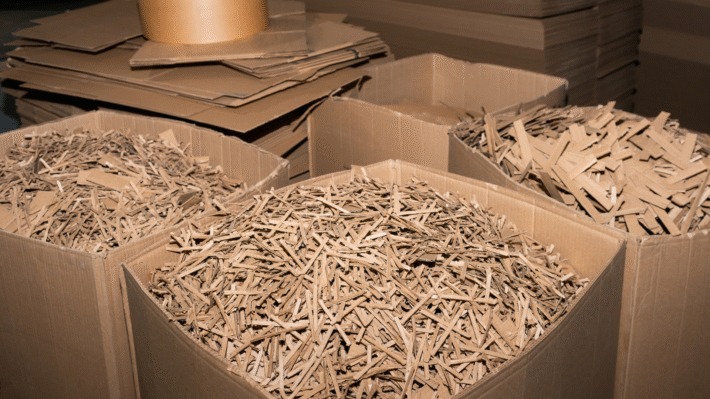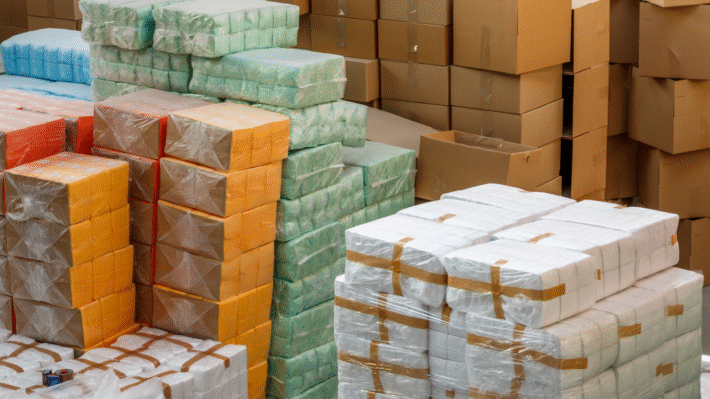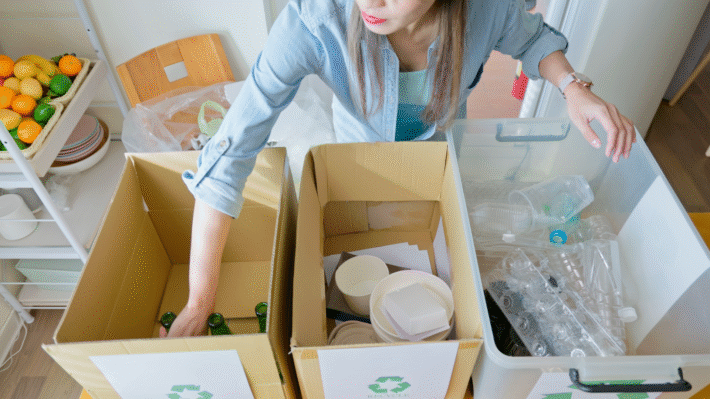Improving Circularity in Feed Supply by Utilizing Waste and Algae Proteins

Creating circularity in the feed supply chain is more important than ever. With our world population growing fast, there’s a pressing need to meet higher feed demand while reducing pressure on our natural resources. How do we achieve this? By embracing a circular feed supply chain that makes the most of every resource!
Food waste optimization is a game-changer. Upcycling food waste through novel methods like anaerobic digestion and fermentation can transform waste into high-protein feed. And let’s not forget the power of insect protein – it’s sustainable and efficient!
Enter algae-based proteins. Cultivating algae offers an incredible high-protein alternative rich in essential nutrients. These solutions promise better nutrition, more efficient feed conversion, and reduced reliance on traditional resources.
Exciting opportunities await in developing closed-loop systems and adopting innovative technologies to elevate sustainability in the feed industry. The future is bright, brimming with the possibilities of food waste optimization and algae-based proteins! 🌱
Objective of Circular Feed Supply Chain
Let’s dive into the world of circular feed supply chains and discover why they’re so important. The planet is getting bigger and busier. More people means we need more food. This puts a lot of pressure on our natural resources. Enter the circular feed supply chain! The idea is to make sure all the food we produce gets used – even what we typically think of as “waste.” It’s like turning leftovers into something useful. And then there’s algae. Algae is a fantastic source of protein that can take the place of less sustainable proteins.
Understanding Circularity Principles
Understanding these principles means seeing how we can reuse almost everything. This is not just about saving but also regenerating.
Role of Upcycling
Upcycling is key here. When we talk about upcycling, we mean turning waste into something new and valuable. For example, we can take food waste and turn it into animal feed. This is done through smart processes like anaerobic digestion, which breaks down the waste without using oxygen. It’s a clever way to squeeze every bit of goodness out of the waste we create.
Importance of Resource Regeneration
Resource regeneration is like a reset button for nature’s resources. It’s ensuring what we take, we give back or change into another form. By regenerating, we keep the Earth full and rich with the resources we need. This makes feed supply chains not just sustainable, but balanced. We need this balance to ensure future generations have what they need.
Implementing Closed-Loop Systems
Closed-loop systems are about recycling resources in such a way that nothing goes to waste. Imagine a loop where everything keeps going round and round, never running out. In the feed supply chain, these systems are essential. They help us make the most of what we have, preventing loss and ensuring everything is put to good use. Within a closed-loop, there’s always a perfect use for each piece.
Global Context and Need
Globally, things aren’t slowing down. More people mean more demand. We need to be smart about how we use what Earth gives us.
Population Growth Impact
The world’s population is growing fast. By the time you read this, there might be a few more mouths to feed on Earth! As more people arrive, the demand for food grows too. We have to be prepared. If we use circular feed supply chains, we can make sure everyone has meals on their plate, without exhausting the planet.
Resource Pressure Challenges
All this growth puts a lot of pressure on our planet’s natural resources. There are only so many trees, so much water, and such little space. Circular feed supply chains relieve some of this pressure by using resources efficiently. This means less is taken from nature, and what’s taken is used wisely. We swap waste for resources, tapping into new solutions like algae for nutrition.
With circularity principles in place, we turn pressures into possibilities, making sure resources last and everyone gets a fair share. Now that’s a future worth working for!
Optimizing Food Waste
Optimizing food waste is not just about throwing less away. It is about turning what’s left into something useful. Let’s dig into some cool ways to do that!
Techniques for Food Waste Reduction
Food waste can be put to good use. We can turn it into something valuable with the right techniques.
Anaerobic Digestion
Anaerobic digestion is like a superpower for food waste. When food waste is put in a place with no air, it starts to break down. As it breaks down, it makes a special kind of gas that can help power homes and cars! Plus, what is left can be used as a natural fertilizer for plants. It’s like magic!
Fermentation and Hydrolysis
Fermentation is the same process that turns milk into yogurt. With food waste, it turns the waste into high-protein feed for animals. Hydrolysis helps food waste break down faster and turns it into simple sugars. These sugars can be used to make biofuels. Fermentation and hydrolysis reduce waste and make new things from it.
Enhancing Insect Protein Use
While eating insects is still new to many, it’s a fantastic way to use less land and water to make food!
Sustainability Benefits
Insect protein is super sustainable because bugs need very little food and water to grow. That means they leave a tiny footprint on the planet. Using insects for protein helps our Earth stay healthy and green.
High Conversion Rates
Bugs are pro-eaters. They turn food waste into protein very quickly. With their high conversion rates, insects can give us more protein from less food waste compared to other animals. This means getting more food with less impact on the environment.
Leveraging Technology in Food Waste
Technology helps us make the most out of our food waste. It is the brain behind the operation!
Using Sensors and AI
Sensors and AI are like detectives for food waste. Sensors sniff out different materials in the waste, and AI helps decide how best to use it. AI can tell us if it should be turned into fertilizer or energy. These tech tools are handy for making sure no waste goes to waste!
Precision Agriculture Techniques
Precision agriculture lets farmers know exactly where to water, fertilize, or plant their crops. This means less guesswork and more using what is needed where it is needed. Because of this, less waste happens right from the start. It helps keep food waste in check.
Optimizing food waste is all about using smart methods to make sure that no food is left behind. With these techniques, we are on the road to becoming champs at cutting down food waste and turning it into treasures!
Exploring Algae-Based Protein Alternatives
Algae, the tiny powerhouses of the ocean, are here to change how we think about food and feed. With a world hungry for smarter and more sustainable solutions, algae-based protein alternatives offer a promising answer. But how do we grow and use them? Let’s dive in!
How to Cultivate Algae
Cultivating algae is like farming sea miniatures—small, but mighty in benefits.
Microalgae vs Macroalgae
Microalgae are the tiny plants that float in the water. You need only a small space to grow them. They are full of protein and nutrients, making them a great choice for feed.
Macroalgae, also known as seaweed, are much larger. These are the leafy greens of the ocean, used not only in food but also in medicines. They grow along the coasts and are harvested in bigger chunks.
Photobioreactors and Open Ponds
Photobioreactors are like glass houses for microalgae. They provide the perfect light and temperature conditions to boost algae growth. They’re great for controlling quality and quantity but can be expensive to set up.
Open ponds use the power of the sun to grow algae. They are large outdoor systems that cost less but depend on the weather. Farmers can spread algae like paint across water, letting nature do the work.
Benefits of Algae Proteins
Algae proteins are like superfoods from the sea. Let’s see why they are special.
High Protein Content
Algae is packed with protein, making it a star in the food chain. It can replace traditional protein sources, offering a cleaner and more sustainable option.
Omega-3 and Amino Acids
Not only is algae rich in protein, but it also holds omega-3 fatty acids and essential amino acids. These nutrients are good for heart health and are often found in fish. But with algae, we skip the fishing part—straight from the source!
Innovative Algae Technology
Technology is making algae farming even better and more efficient for our future.
Genetic Engineering Advancements
With genetic engineering, scientists can tweak algae to grow faster and hold more nutrients. This means more food with less effort, turning algae into a powerful tool for nutrition.
Biotechnology for Enhanced Yield
Using biotechnology, farmers can improve algae production. Special techniques help get the most out of each algae crop, meeting the demand for protein-rich feed efficiently.
By exploring and investing in algae-based protein alternatives, we are not only feeding the world but doing so in a smart, sustainable way. Algae is proving that big things do come from small packages.
Benefits of Creating Circularity
Understanding the Benefits of Creating Circularity is key to helping our planet and our economy. Let’s look at the great things that come from making our feed supply chain more circular.
Environmental Advantages
Creating a circular feed supply chain has Environmental Advantages that can help Mother Earth in so many ways.
Reduced Impact and Emissions
When we use circular practices, we can make a Reduced Impact and Emissions on our environment. This means less pollution is put into the air and the water. It’s like doing our part to keep our Earth beautiful and clean.
Resource Conservation Efforts
By focusing on Resource Conservation Efforts, we save the goodies nature gives us. Imagine if everyone reused and recycled their toys. That’s what happens with our resources; we use them wisely so they last longer. This helps animals and plants stay healthy too.
Improving Feed Efficiency
With circular practices, we are also Improving Feed Efficiency in amazing ways.
Enhanced Nutrition in Livestock
Enhanced Nutrition in Livestock means we can provide animals with better food. This food helps them grow strong, just like how eating veggies and fruits helps us grow healthy.
Better Animal Health
Having Better Animal Health is vital since healthy animals give us nutritious meat, milk, and eggs. They are like superheroes, and we want to keep them strong and fit!
Economic Opportunities
A circular system isn’t just good for the environment; it creates Economic Opportunities for people too.
Market Creation and Job Growth
When we create new products, like algae-based protein or insect protein, we are helping in Market Creation and Job Growth. More jobs mean more people can work and take care of their families. Imagine new shops opening in your town and hiring neighbors and friends!
Sustainability and Food Security
Sustainability and Food Security are all about making sure everyone has enough food to eat, now and in the future. Circular systems help us grow this abundance of food by using every bit wisely. It’s like making sure every slice of pizza is enjoyed and nothing goes to waste.
In conclusion, the Benefits of Creating Circularity are powerful. They strengthen our environment, make animals healthier, and bring fantastic opportunities for jobs and security. It’s a win-win for everyone, including you and me!
Challenges and Solutions in Feed Circularity
Overcoming Scaling Difficulties
Algae Cultivation and Processing
Algae Cultivation can be tricky when you’re trying to make it big. Growing algae needs certain conditions like light, water, and nutrients. One problem is Space. Algae need big ponds or tanks, and finding room for these is hard. Processing Algae is another challenge. To turn algae into protein, it must be dried and processed. This takes energy and costs money. We can build more efficient systems to lower these costs and make algae-based proteins more available to everyone.
Economic Viability Strategies
Cost Competitiveness and Funding
Cost Competitiveness is about making algae protein as cheap as other feed options. Right now, it’s pricey. But we can use new technology to lower these costs. We also need Funding to help build new facilities for algae. Governments and companies can provide money for this.
Developing New Market Opportunities
New Market Opportunities mean finding new places to use algae proteins. Farms can use it for animal feed. Factories can use it for making goods. Finding more uses helps lower prices and creates new jobs.
Enhancing Consumer Acceptance
Addressing Sensory Changes
Sensory Changes mean how the feed tastes, smells, and looks. Algae protein might be different from what animals usually eat. We must tweak the feed to make it pleasant, so animals will eat it happily.
Education Initiatives
Education Initiatives help people understand why algae protein is good. We need to teach them about its benefits for the planet and their pocketbooks. This knowledge can make people more open to using it. By making consumers aware, they’ll be ready to switch to sustainable choices.
Integration Strategies for Circularity
Let’s dive into how circularity can be brought into action in the feed supply chain with some smart strategies. This isn’t just a wishful idea; it’s a doable mission. Now, let’s explore the plans to make this dream a reality.
Supplementing Traditional Feed
Feeding our animals efficiently is vital. We can do more than just stick to old ways. Adding new ingredients to animal feed can transform things for the better, offering not just quality, but quantity too.
Increasing Protein Content
Animal feed needs lots of protein, because it helps our furry friends grow strong. One way to add more protein is by using algae and insect proteins. These are not only high in protein, but also have a smaller footprint on our planet compared to traditional sources. Algae don’t need much space or freshwater to grow, making them a sustainable choice.
Enhancing Meat Analogs
Real meat is yummy, but it takes a lot of resources to produce. That’s where meat analogs—or plant-based meats—come in. They’re not just an alternative; they can be delicious and healthy when made the right way.
Improving Amino Acid Profile
For meat analogs to be as nutritious as real meat, they need the right amino acids. Using algae proteins can improve the amino acid content in plant-based meats. This makes sure they have all the important nutrients we need. With algae, scientists can adjust and perfect the amino acid profile, making the substitutes close to real meat. This way, they can be not only tasty but also nutritious.
Implementing Closed-Loop Systems
Creating systems where nothing goes to waste is essential. Everything is reused, just like in nature. This way, we save resources and protect our planet.
Nutrient Recycling Innovations
In a closed-loop system, waste isn’t just thrown away; it’s brought back into the system as something useful. Anaerobic digesters can turn food waste into bioenergy and fertilizers. These can then be used to grow more food, completing the cycle.
Water Conservation Practices
Water is precious, so conserving it is a big win. In closed-loop systems, water used in one process can be cleaned and reused for another. This reduces the need for new water sources. Vertical farming and hydroponics are systems that use closed-loop methods to reduce water use. By reusing water and nutrients, we can produce more with less.



